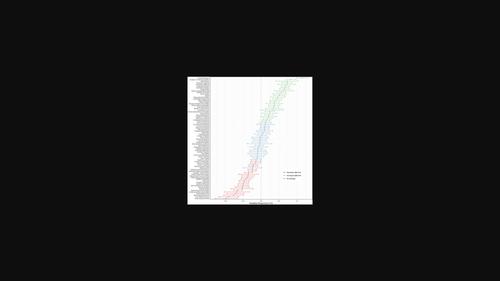当前位置:
X-MOL 学术
›
Austral Ecol.
›
论文详情
Our official English website, www.x-mol.net, welcomes your
feedback! (Note: you will need to create a separate account there.)
Using citizen science to measure recolonisation of birds after the Australian 2019–2020 mega-fires
Austral Ecology ( IF 1.6 ) Pub Date : 2021-08-31 , DOI: 10.1111/aec.13105 Joshua S. Lee 1 , Corey T. Callaghan 1, 2 , William K. Cornwell 1, 2
Austral Ecology ( IF 1.6 ) Pub Date : 2021-08-31 , DOI: 10.1111/aec.13105 Joshua S. Lee 1 , Corey T. Callaghan 1, 2 , William K. Cornwell 1, 2
Affiliation

|
Large and severe fires (‘mega-fires’) are increasing in frequency across the globe, often pushing into ecosystems that have previously had very long fire return intervals. The 2019–2020 Australian bushfire season was one of the most catastrophic fire events on record. Almost 19 million hectares were burnt across the continent displacing and killing unprecedented numbers of native fauna, including bird species. Some bird species are known to thrive in post-fire environments, while others may be absent for an extended period from the firegrounds until there is sufficient ecosystem recovery. To test for systematic patterns in species use of the post-fire environment, we combined citizen science data from eBird with data on sedentism, body size, range size and the specialisation of diet and habitat. Using generalised additive models, we modelled the responses of 76 bird species to the 2019–2020 Australian mega-fires. Twenty-two species decreased in occurrence after the fire; 30 species increased; and no significant effect was found for the remaining 24 species. Furthermore, diet specialists, and birds with smaller body sizes and range sizes were less likely to be found in burnt areas after the fire event compared to before, a result which generates testable hypotheses for recovery from other mega-fires across the globe. Being displaced from the firegrounds for an event of this geographic magnitude may have severe consequences for population dynamics and thus warrant considerable conservation attention in pre-fire planning and in the post-fire aftermath.
中文翻译:

在澳大利亚 2019-2020 年特大火灾后使用公民科学来衡量鸟类的重新定居
大型和严重火灾(“特大火灾”)在全球范围内发生的频率越来越高,通常会侵入以前火灾重现间隔很长的生态系统。2019-2020 年澳大利亚丛林大火季节是有记录以来最灾难性的火灾事件之一。整个大陆近 1900 万公顷土地被烧毁,取代和杀死了前所未有的本土动物群,包括鸟类。众所周知,一些鸟类可以在火灾后的环境中茁壮成长,而其他鸟类可能会在很长一段时间内远离火场,直到生态系统得到充分恢复。为了测试火灾后环境中物种利用的系统模式,我们将来自 eBird 的公民科学数据与关于定居、体型、范围大小以及饮食和栖息地专业化的数据结合起来。使用广义加性模型,我们模拟了 76 种鸟类对 2019-2020 年澳大利亚特大火灾的反应。火灾后有 22 个物种减少;增加30种;其余 24 种未发现显着影响。此外,与之前相比,在火灾事件发生后,饮食专家以及体型和范围较小的鸟类不太可能出现在被烧毁的地区,这一结果为从全球其他特大火灾中恢复提供了可检验的假设。由于这种地理规模的事件而从火场流离失所可能会对种群动态产生严重后果,因此需要在火灾前规划和火灾后后果中给予相当大的保护关注。增加30种;其余 24 种未发现显着影响。此外,与之前相比,在火灾事件发生后,饮食专家以及体型和范围较小的鸟类不太可能出现在被烧毁的地区,这一结果为从全球其他特大火灾中恢复提供了可检验的假设。由于这种地理规模的事件而从火场流离失所可能会对种群动态产生严重后果,因此需要在火灾前规划和火灾后后果中给予相当大的保护关注。增加30种;其余 24 种未发现显着影响。此外,与之前相比,在火灾事件发生后,饮食专家以及体型和范围较小的鸟类不太可能出现在被烧毁的地区,这一结果为从全球其他特大火灾中恢复提供了可检验的假设。由于这种地理规模的事件而从火场流离失所可能会对种群动态产生严重后果,因此需要在火灾前规划和火灾后后果中给予相当大的保护关注。这一结果为从全球其他特大火灾中恢复生成了可检验的假设。由于这种地理规模的事件而从火场流离失所可能会对种群动态产生严重后果,因此需要在火灾前规划和火灾后后果中给予相当大的保护关注。这一结果为从全球其他特大火灾中恢复生成了可检验的假设。由于这种地理规模的事件而从火场流离失所可能会对种群动态产生严重后果,因此需要在火灾前规划和火灾后后果中给予相当大的保护关注。
更新日期:2021-08-31
中文翻译:

在澳大利亚 2019-2020 年特大火灾后使用公民科学来衡量鸟类的重新定居
大型和严重火灾(“特大火灾”)在全球范围内发生的频率越来越高,通常会侵入以前火灾重现间隔很长的生态系统。2019-2020 年澳大利亚丛林大火季节是有记录以来最灾难性的火灾事件之一。整个大陆近 1900 万公顷土地被烧毁,取代和杀死了前所未有的本土动物群,包括鸟类。众所周知,一些鸟类可以在火灾后的环境中茁壮成长,而其他鸟类可能会在很长一段时间内远离火场,直到生态系统得到充分恢复。为了测试火灾后环境中物种利用的系统模式,我们将来自 eBird 的公民科学数据与关于定居、体型、范围大小以及饮食和栖息地专业化的数据结合起来。使用广义加性模型,我们模拟了 76 种鸟类对 2019-2020 年澳大利亚特大火灾的反应。火灾后有 22 个物种减少;增加30种;其余 24 种未发现显着影响。此外,与之前相比,在火灾事件发生后,饮食专家以及体型和范围较小的鸟类不太可能出现在被烧毁的地区,这一结果为从全球其他特大火灾中恢复提供了可检验的假设。由于这种地理规模的事件而从火场流离失所可能会对种群动态产生严重后果,因此需要在火灾前规划和火灾后后果中给予相当大的保护关注。增加30种;其余 24 种未发现显着影响。此外,与之前相比,在火灾事件发生后,饮食专家以及体型和范围较小的鸟类不太可能出现在被烧毁的地区,这一结果为从全球其他特大火灾中恢复提供了可检验的假设。由于这种地理规模的事件而从火场流离失所可能会对种群动态产生严重后果,因此需要在火灾前规划和火灾后后果中给予相当大的保护关注。增加30种;其余 24 种未发现显着影响。此外,与之前相比,在火灾事件发生后,饮食专家以及体型和范围较小的鸟类不太可能出现在被烧毁的地区,这一结果为从全球其他特大火灾中恢复提供了可检验的假设。由于这种地理规模的事件而从火场流离失所可能会对种群动态产生严重后果,因此需要在火灾前规划和火灾后后果中给予相当大的保护关注。这一结果为从全球其他特大火灾中恢复生成了可检验的假设。由于这种地理规模的事件而从火场流离失所可能会对种群动态产生严重后果,因此需要在火灾前规划和火灾后后果中给予相当大的保护关注。这一结果为从全球其他特大火灾中恢复生成了可检验的假设。由于这种地理规模的事件而从火场流离失所可能会对种群动态产生严重后果,因此需要在火灾前规划和火灾后后果中给予相当大的保护关注。











































 京公网安备 11010802027423号
京公网安备 11010802027423号